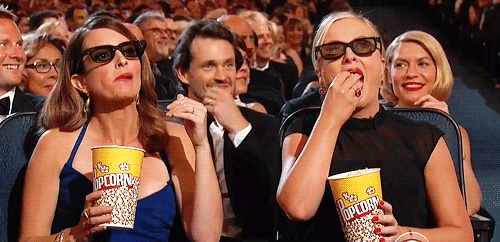From the Editors, July 2017
Using GIFs as a means to explore film and screen media offers an almost infinite variety of entry points and ways of looking. These distinct moments can be found at any point within the unfolding of our screen texts. Issue 8 of Peephole Journal reflects this variety and diversity, taking us all the way from what we see before a film is released, to the vital tone established in a film's opening shot, to a concluding moment of a filmic "coda" to a much-loved television show – and many moments in-between.
In his essay "Trailer Teased: Tone vs. Story Accuracy in Film Marketing", Angus Attwood has shrewdly utilised Peephole's format to explore a contemporary phenomenon of filmic marketing - the "teaser" trailer. By unpicking the promises provided and stories delivered in trailers Attwood argues that a shot need not be included in the final film to be important in the broader filmic text. While for Attwood, these visual supplements can play vital roles in establishing the tone of a film, for Adrian Martin in his essay "Opening, Night", it is the opening shot that provides the key test of a film, in establishing its mood and grabbing the audience's attention. In his analysis Philippe Garrel's The Birth of Love (La Naissance de l'amour, 1993), Martin explores how a film's opening shot can encapsulate the entire film to follow.
In her contribution "Only The Brave gaze queerly", Whitney Monaghan also analyses an opening shot, of Ana Kokkinos' 1994 feature. Monaghan explores how Kokkinos' use of framing and gesture - present from the very first fiery shots of this film – provide a queer desiring gaze that is both gendered and ethnically marked, privileging seeing over saying. Similar themes of looking circulate throughout many essays in this issue. For if opening shots have the pressure of condensing and anticipating the forthcoming action, closing shots linger particularly strongly in the memory. Both Anubha Sarkar and Joanna Di Mattia consider the final moments – and final gazes – of their chosen examples. Sarkar explores the fleeting gazes of Majid Majidi's Baran (2001), glances between characters which are destined to remain intangible but not immaterial. Looking is both eponymous and central to the motif of the mirror identified by Joanna Di Mattia in her article on the television series Looking (2014–16, HBO). Unpacking the complex relations of gazing and reflection across the entire series, for Di Mattia it is the final appearance of a mirror in the series' feature-length finale that crystallises its significance – and hints to ongoing relations between characters that the audience is destined never to see.
Our other contributors to Issue 8 find moments of filmic significance being mediated by other creative media. Rhiannon Dalglish argues that in Ferris Bueller's Day Off (John Hughes, 1986), it is Cameron's encounter with a Georges Seurat painting – and the cascade of gazes that this initiates – that constructs the film's most relatable moment. For Felicity Chaplin, it is dance that facilitates a moment of "pure cinema" in Céline Sciamma's Bande de filles (2014), representing the euphoria and complexities of female friendship, through the movement of bodies in space. If Bande de filles captures the joys and anxieties of teenage friendships, for Jarryd Brand the angst that accompanies growing up is not restricted to childhood. In his article "Coping with adult angst in Adventure Time", Brand argues that the animated television show's broad appeal is due to the complex balancing acts that it achieves, combining "high" and "low" references, "adult" and "child-friendly" themes. Brand's contribution is a taster of what is to come in our upcoming ninth issue, which takes animation as its theme.
This issue of Peephole Journal is one of our largest issues ever, and in terms of content covered one of our most diverse. It showcases a variety of ways of looking at film and screen, using a single GIF as a way to approach a wide range of issues. We hope you enjoy reading this issue as much as we enjoyed editing it.
Upcoming:
Our next issue will focus on animation and we will be circulating a Call for Contributors shortly. Get in touch with editors@peepholejournal.tv if you'd like to be involved!

